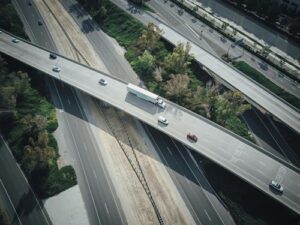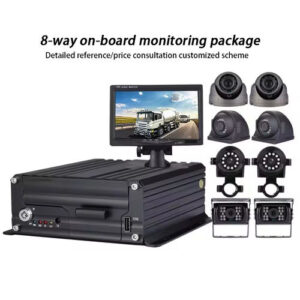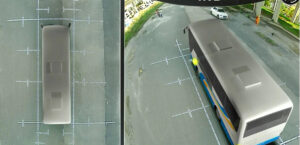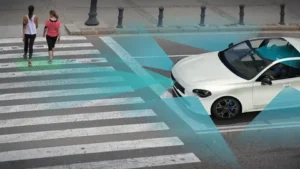In today’s fast-paced world, ensuring road safety has become more critical than ever. Advanced technologies like the Crash Recorder Camera are revolutionizing how drivers capture and review accident data. This article explores what a Crash Recorder Camera is, its core features, and how it can significantly enhance your driving safety.
What Is a Crash Recorder Camera?
A Crash Recorder Camera is a specialized device designed to record video and collect data when a vehicle experiences sudden deceleration or impact. Unlike traditional dashcams, these cameras are equipped with sensors that automatically trigger recording during collisions or abrupt braking. This capability ensures that every critical moment is documented, providing valuable evidence for accident analysis, insurance claims, and even legal proceedings.
For more detailed information on vehicle safety technologies and their importance, refer to the National Highway Traffic Safety Administration (NHTSA), which offers comprehensive guidelines on crash data recording and safety standards.
Key Features of a Crash Recorder Camera
1. Automatic Impact Recording
Equipped with highly sensitive G-sensors, Crash Recorder Cameras automatically begin recording when they detect sudden impacts or rapid deceleration. This hands-free activation is crucial in capturing the exact moment of an accident without relying on the driver’s intervention.
2. High-Definition Video & Night Vision
Most modern Crash Recorder Cameras offer high-definition recording (1080p or higher) to ensure every detail is captured clearly. Additionally, many models include night vision capabilities, ensuring that the quality of the footage remains high even in low-light conditions. Reliable video evidence is essential for accurate accident reconstruction—a point emphasized by Consumer Reports.
3. Multi-Angle Recording
Some advanced models feature multi-channel recording, allowing simultaneous capture from different angles (e.g., front, rear, and interior views). This multi-angle perspective provides a more comprehensive understanding of the events leading up to, during, and after a crash.
4. Data Security and Storage
To safeguard critical footage, Crash Recorder Cameras typically offer loop recording, automatic file locking upon impact, and encrypted storage options. These features ensure that once an accident is recorded, the data remains intact and secure, reducing the risk of accidental deletion or tampering.
For further insights into recording technology and secure data practices, check out TechRadar’s Best Dash Cams Guide.
Benefits of Using a Crash Recorder Camera
- Accurate Accident Documentation: Provides clear, irrefutable evidence that can help determine fault and streamline insurance claims.
- Enhanced Road Safety: Acts as a deterrent for unsafe driving and can improve overall driver behavior.
- Peace of Mind: Knowing that every critical moment is automatically recorded allows drivers to focus on the road, confident that evidence is safely captured.
How to Choose the Right Crash Recorder Camera
When selecting a Crash Recorder Camera, consider the following factors:
- Video Quality: Ensure the device offers at least 1080p resolution and robust night vision functionality.
- Sensor Sensitivity: Look for models with reliable G-sensors that trigger recording instantly during sudden impacts.
- Storage Options: Choose a camera that supports high-capacity memory cards and provides features like loop recording and data encryption.
- Ease of Installation: Opt for a model that can be easily mounted and integrated with your vehicle’s interior without obstructing your view.
Reading expert reviews on sites like Consumer Reports can also help you make an informed decision based on real-world performance and reliability.
Installation & Maintenance Best Practices
Installation Tips
- Optimal Positioning: Install the Crash Recorder Camera near the rear-view mirror or dashboard center to capture the best field of view.
- Secure Mounting: Ensure that the camera is firmly mounted to minimize vibrations and maintain a clear recording during sudden impacts.
- Proper Wiring: Use quality cabling to connect the camera to your vehicle’s power source, ensuring uninterrupted operation.
For a step-by-step installation guide, you may find wikiHow’s dashcam installation guide to be very useful.
Maintenance Guidelines
- Regular Checks: Frequently inspect the camera, its wiring, and storage media to confirm that everything is in working order.
- Firmware Updates: Keep the device’s firmware updated to benefit from the latest features and security enhancements.
- Data Management: Periodically back up and secure recorded footage to avoid data loss due to storage overflow or accidental deletion.
Conclusion
The Crash Recorder Camera is more than just a recording device—it’s an essential tool for enhancing vehicle safety and ensuring accountability in the event of an accident. With features like automatic impact recording, high-definition video quality, and robust data protection, this advanced technology provides indispensable evidence that can influence insurance claims and legal proceedings.
By carefully selecting and properly installing a Crash Recorder Camera, drivers can significantly boost their road safety. For more authoritative insights into vehicle safety and recording technology, visit trusted resources such as the NHTSA and Consumer Reports.
Invest in a Crash Recorder Camera today and take a proactive step toward safer driving and peace of mind on the road.






